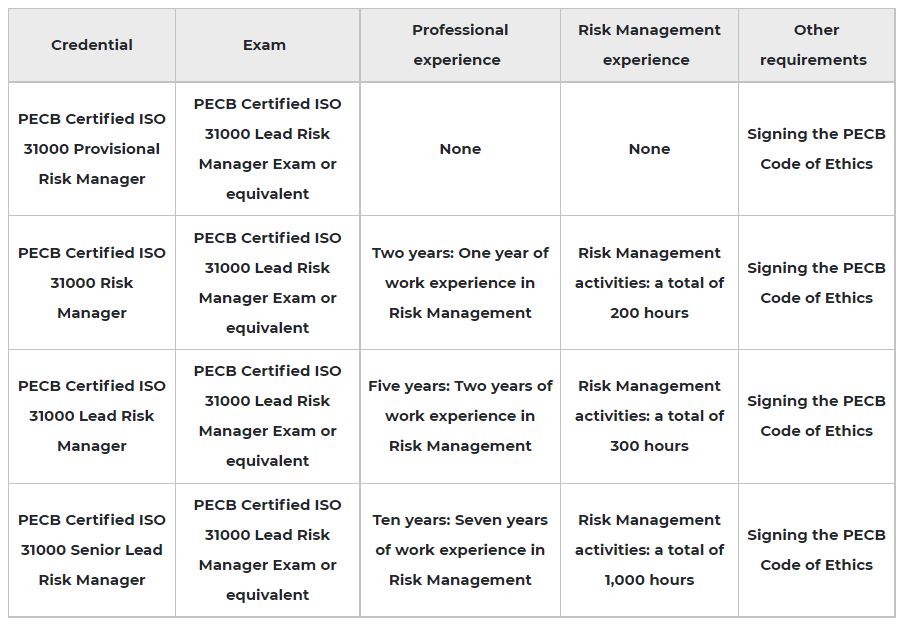TRAINING DAYS
3
CPD CERTIFICATION
21 Credits
EXAM DURATION
2 Hours
EXAM RETAKE POSSIBLE?
Yes. Free one more exam in 12 months
WHAT IS INCLUDED?
Training, PECB exam and certification
Why Should You Attend?
The ISO 31000 Risk Manager training course helps participants acquire the knowledge necessary and ability to integrate the risk management guidelines of ISO 31000 in an organization. It provides information with regard to the risk management principles and their application, as well as the core elements of the risk management framework and steps for a risk management process. In addition, it provides the basic approaches, methods, and practices for assessing risk in a wide range of situations.
Upon completion of the training course, you can sit for the exam and apply to obtain the “PECB Certified ISO 31000 Risk Manager” credential. The credential demonstrates your knowledge and ability to apply the risk management process in an organization based on the guidelines of ISO 31000 and best practices.
Who Should Attend?
Learning objectives
This training course will help you:
Educational approach
Prerequisites
A fundamental understanding of ISO 31000 and comprehensive knowledge of risk management.
Course Agenda
Day 1: Introduction to ISO 31000 and risk management and establishing the risk management framework
Day 2: Initiation of the risk management process and risk assessment based on ISO 31000
Day 3: Risk treatment, recording and reporting, monitoring and review, and communication and consultation according to ISO 31000
Examination
The “PECB Certified ISO 31000 Risk Manager” exam complies with the requirements of the PECB Examination and Certification Program (ECP). The exam covers the following competency domains:
Domain 1: Fundamental principles and concepts of risk management
Domain 2: Establishing the risk management framework
Domain 3: Application of the risk management process
General Information
1. Training course materials containing over 300 pages of information and practical examples will be distributed to participants.
2. An attestation of course completion of 21 CPD (Continuing Professional Development) credits will be issued to the participants who have attended the training course.
3. If you fail the exam, you can retake the exam once for free within 12 months following the initial exam date.
Certification
Having successfully passed the exam, you can apply for the respective credential. You will receive the certificate once you comply with all the requirements of this certification. Certification fees are included in the exam price. The requirements for the “PECB Certified ISO 31000 Risk Manager” certifications are:

To be considered valid risk management experience, the activities should follow best risk management practices and include the following:
1. Identifying assets, existing measures, risk sources, and consequences
2. Assessing risk consequences and incident likelihood and determining the risk level
3. Evaluating risk levels and risk treatment options
4. Selecting risk treatment options, developing a risk treatment plan, and evaluating residual risk
5. Accepting the risk treatment plan and the residual risk

